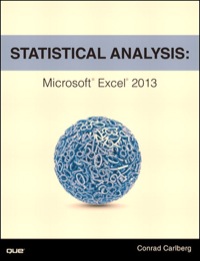Answered step by step
Verified Expert Solution
Question
1 Approved Answer
Mountainside Manors, Inc., builds environmentally sensitive structures. The company's 2018 revenues totaled $2,82 million. At December 31, 2018, and 2017, the company had, respectively, $650




Mountainside Manors, Inc., builds environmentally sensitive structures. The company's 2018 revenues totaled $2,82 million. At December 31, 2018, and 2017, the company had, respectively, $650 million and $584 million in current assets. unts: B (Cli Data Table - Read th Require 2018 2017 Choose At year-end (In millions) Liabilities and stockholders' equity Current liabilities Long-te compan $ 162 $ 196 Accounts payable Accrued expenses Accrued employee compensation and benefits 152 185 Other li TIC 64 15 categori 8 16 Accour 386 412 been pu Current portion of long-term debt Total current liabilities Long-term debt Post-retirement benefits payable Other liabilities 1,428 1,308 78 99 ated Accruel expense 27 26 1,580 Post-re 2,030 Total stockholders' equity n care cos $ 3,949 $ 3,425 Total liabilities and stockholders' equity Curren Year-end (in millions) Cost of goods sold $ 2,327 $ 2,436 Accrue se are liabi Print Done Require Mountainside Manors, Inc., builds environmentally sensitive structures. The company's 2018 revenues totaled $2,825 million. At December 31, 2018, and 2017, the company had, respectively, $650 million and $584 million in current assets. The December 31, 2018, and 2017, balance sheets and income statements reported the following amounts: 3(Click the icon to view the amounts.) Read the requirements. Requirement 1. Describe each of Mountainside Manors, Inc.'s liabilities and state how the liability arose. Choose the correct liability from the list that best fits the description provided. The amount of long-term notes and bonds payable that the Long-term debt company expects to pay after the coming year. Other liabilities A catch-all group of liabilities that do not fit one or more specific categories. This is usually listed among the long-term liabilities. Amounts owed to suppliers for products or services that have Accounts payable been purchased on account. Accrued employee compensation and benefits Amounts owed to employees for salaries and other payroll-related expenses. Post-retirement benefits Amounts owed for providing benefits to retirees such as health care costs. Current portion of long-term debt The next year's payments on the company's long-term debt. Accrued expenses Expenses that the company has incurred but not yet paid; these are liabilities for expenses such as interest and income taxes. Requirement 2. What were the company's total assets at December 31, 2018? The total assets at December 31, 2018 were $ 3,949 million. Requirement 3. Assume that beginning and ending inventories for both periods did not differ by a material amount. Accounts payable at the end of 2016 was $210 million. Calculate accounts payable turnover as a ratio and days' payable outstanding (DPO) for 2017 and 2018. Calculate current ratios for 2017 and 2018 as well. Evaluate whether the company improved or deteriorated from the standpoint of its ability to cover accounts payable and current liabilities over the year. Determine the formula for the accounts payable turnover. Then complete the formula and calculate the accounts payable turnover ratios at the end of 2017 and 2018. (Enter amounts in millions.) Purchases from suppliers (or COGS) Accounts payable = turnover Average accounts payable 2018 2,327 = 2017 2,436 = Next, determine the formula for the days' payable outstanding (DPO). Then complete the formula and calculate the days' payable outstanding at the end of 2017 and 2018. (Enter the amounts in the formula to two decimal places, X.XX. Round your answers to the nearest whole day.) Days' payable outstanding 2018 2017 Now, determine the formula for the current ratio. Then complete the formula and calculate the current ratios at the end of 2017 and 2018. (Enter amounts in millions. Round your answer to two decimal places.) Current ratio 2018 2017 Evaluate whether the company improved or deteriorated from the standpoint of ability to cover accounts payable and current liabilities over the year. The company's ability to cover accounts payable and current liabilities over the year
Step by Step Solution
There are 3 Steps involved in it
Step: 1

Get Instant Access to Expert-Tailored Solutions
See step-by-step solutions with expert insights and AI powered tools for academic success
Step: 2

Step: 3

Ace Your Homework with AI
Get the answers you need in no time with our AI-driven, step-by-step assistance
Get Started


